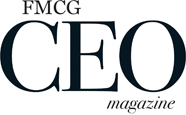The RIC symbol, that appears on most UK plastic packaging, must go, writes Bill Swan

Bill Swan
Managing Director
Paper Round
In 2016, Ellen MacArthur proclaimed that by 2050 there will be more plastic than fish in the sea. The shocking statement took newsrooms by storm. Although the headlines moved on, the problem did not. After the airing of Blue Planet 2, the topic of plastics resurfaced with more urgency, homing in on questions of whether plastic can in fact be recycled, what makes one type more recyclable than others and what can be considered a plastic product at all.
The answers are surprisingly complex and the current level of information available to consumers is not helpful. Types of plastic are covered internationally by the ASTM International Resin Identification Coding System, often abbreviated as the RIC. This system of seven categories includes symbols with numbers that identify the product’s polymer type. They’re printed on most UK plastic packaging. From a recycling industry point of view, the issues around RIC are three-fold:
Type: There are actually different types of plastic for each RIC Code which can’t be treated in the same way. Take RIC code 1, PET as an example. The PET used to make a bottle, is highly desirable and can be recycled easily. But the PET used to make tubs and trays has different composition and structure and can’t be recycled using the same process. This confusion affects other categories too: type 5, PP used in a soup pot, is compositionally different from the plastic category 5 used in a salad bag.

Form: RIC codes don’t acknowledge the impact that form has on recyclability. Three dimensional products like bottles and pots sort well in materials recovery plants. In contrast, films in the form of wrappers and bags get caught in machinery or sandwiched between layers of card where it acts as a contaminant.
Colour: Finally, colour also has an impact, particularly the colour black, and RIC codes don’t recognise it. Dyed and pigmented plastics, for example, can cause problems for materials recovery facilities while clear plastics have the highest material value because of its flexibility. If you look at the symbols this way, it’s very clear something needs to be done. Paper Round is calling for these codes to be removed: we are proposing the compulsory adoption of On-Pack Recycling Labels (OPRL). OPRL is based on the reality of the recycling services available. It gives clearer info on what action to take for each packaging component, such as trays, film and foil. The lack of transparency in plastics recycling is driving cynicism. The complete product lifecycle chain from packaging manufacturer, retailer, local authority recycling and waste management companies must work together in a more honest and transparent way.





